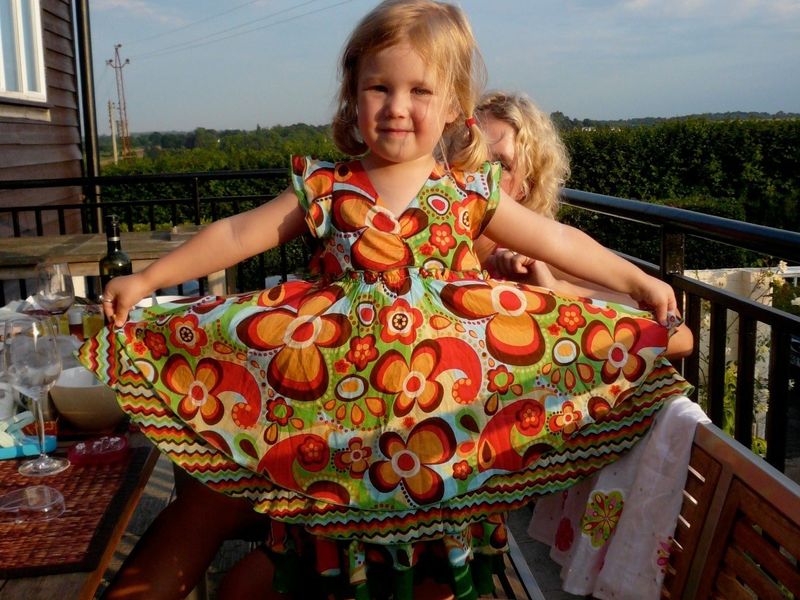Shock and anger as child sexual exploitation victims ‘not in scope’ of violence against women and girls strategy – Sky News

Report on the UK’s Violence Against Women and Girls (VAWG) Strategy and its Alignment with Sustainable Development Goals (SDGs)
Executive Summary
- A draft of the UK government’s Violence Against Women and Girls (VAWG) strategy does not explicitly include victims of child sexual exploitation, creating a significant policy gap.
- This exclusion raises critical concerns regarding the UK’s commitment to key Sustainable Development Goals, particularly SDG 5 (Gender Equality) and SDG 16 (Peace, Justice and Strong Institutions).
- Stakeholders, including survivor advocates and non-governmental organizations, argue that this approach undermines efforts to protect vulnerable girls and fails to address the interconnected nature of gender-based violence, thereby impeding progress on the 2030 Agenda.
Analysis of the Draft Strategy’s Scope
Exclusion of Child Sexual Exploitation (CSEA)
- An internal Home Office document titled “Scope of the Strategy… Our draft definition of VAWG” states that while it recognizes “links” between VAWG and CSEA, the latter is “not explicitly within the scope of the strategy.”
- CSEA, which includes grooming, rape, and non-physical abuse, is classified by police as a “critical threat” to women and girls.
- The government has pledged to halve VAWG by 2035, but critics contend this target is fundamentally flawed if a major category of violence against girls is omitted from its framework and metrics.
Stakeholder Opposition and Policy Incoherence
- Survivor advocates question the logic of a strategy for “Violence Against Women and Girls” that omits a primary form of violence affecting girls.
- Campaign groups like End Violence Against Women and Rape Crisis warn that creating a separate plan for child sexual abuse could establish a “problematic and potentially very unhelpful” distinction, ignoring the fact that perpetrators of domestic abuse often also sexually abuse children.
- The Centre of Expertise on Child Sexual Abuse estimates that 500,000 children in England and Wales are sexually abused annually, illustrating the vast scale of the issue being procedurally separated.
Implications for Sustainable Development Goals
Contradiction with SDG 5: Gender Equality
- The strategy’s narrow scope directly conflicts with SDG Target 5.2, which calls for the elimination of “all forms of violence against all women and girls in the public and private spheres, including trafficking and sexual and other types of exploitation.”
- By failing to explicitly include CSEA, the policy neglects a critical dimension of gender-based violence that disproportionately affects girls, hindering progress towards achieving gender equality.
Undermining SDG 16: Peace, Justice, and Strong Institutions
- SDG Target 16.2 explicitly aims to “end abuse, exploitation, trafficking and all forms of violence against and torture of children.”
- A fragmented policy approach risks creating weaker, less effective, and less accountable institutional responses to child protection, contrary to the objectives of SDG 16.
- An integrated strategy is essential for building the strong institutions required to provide justice and protection for all victims, particularly the most vulnerable children.
Impact on Interconnected Goals
- SDG 3 (Good Health and Well-being): The severe and long-term physical and mental trauma resulting from CSEA is a significant public health issue. A comprehensive strategy is necessary to uphold the right to health and well-being for survivors.
- SDG 4 (Quality Education): The report notes that educational settings can be crucial for abuse awareness. This underscores the need for policies that support safe and informative environments as part of a holistic approach to child protection and empowerment.
Government Position and Conclusion
Official Response
- A Home Office spokesperson stated the government is “working tirelessly to tackle the scourges of violence against women and girls and child sexual abuse,” acknowledging the overlap between them.
- The government’s stated intention is to create a separate, “distinctive programme” to address the specific crimes of child sexual abuse, alongside a national inquiry into grooming gangs.
Conclusion
- The decision to exclude CSEA from the primary VAWG strategy is viewed by experts and advocates as a significant setback for creating a cohesive and effective framework to combat gender-based violence.
- This siloed approach is inconsistent with the integrated and indivisible nature of the Sustainable Development Goals, which demand holistic solutions. To align with international commitments like the 2030 Agenda and ensure no victim is left behind, an integrated strategy that provides comprehensive protection for all women and girls is required.
Analysis of Sustainable Development Goals in the Article
1. Which SDGs are addressed or connected to the issues highlighted in the article?
-
SDG 5: Gender Equality
- The article’s central theme is the UK government’s Violence Against Women and Girls (VAWG) strategy. It discusses Child Sexual Abuse and Exploitation (CSEA) as a “critical threat” to women and girls, directly linking the issue to gender-based violence. The entire debate revolves around ensuring that violence specifically affecting girls is included in a strategy designed to protect them, which is a core component of achieving gender equality.
-
SDG 16: Peace, Justice and Strong Institutions
- The article addresses the role of government and institutions in protecting vulnerable populations. It critiques a specific government policy (the VAWG strategy) for potentially failing to protect child victims of sexual abuse. The discussion about policing crime, the need for effective strategies, and ensuring justice for victims like Poppy (whose abuser was convicted) relates directly to the goal of building effective, accountable, and inclusive institutions at all levels and ending violence against children.
2. What specific targets under those SDGs can be identified based on the article’s content?
-
Target 5.2: Eliminate all forms of violence against all women and girls
- This target is explicitly relevant as the article focuses on the VAWG strategy. The forms of violence discussed, including “grooming,” “rape,” and “forcing children to look at sexual images,” are all forms of violence and sexual exploitation that this target aims to eliminate. The government’s pledge to “halve VAWG within a decade” is a direct commitment related to this target.
-
Target 16.2: End abuse, exploitation, trafficking and all forms of violence against and torture of children
- The article’s primary subject is Child Sexual Abuse and Exploitation (CSEA). The personal testimony of Poppy, who was “sexually abused and raped” as a child, exemplifies the exact issues this target seeks to address. The concern raised by campaign groups that excluding CSEA from the main VAWG strategy might mean “failing many young victims of abuse” underscores the importance of this target.
3. Are there any indicators mentioned or implied in the article that can be used to measure progress towards the identified targets?
-
Indicator for Target 5.2: Prevalence of Violence Against Women and Girls
- The article mentions a specific national goal that serves as an indicator: “The government has pledged to halve VAWG within a decade, by 2035.” This pledge implies a commitment to measuring the overall incidence of violence against women and girls and reducing it by a specific amount over a set timeframe, which aligns with the purpose of indicators for Target 5.2.
-
Indicator for Target 16.2: Prevalence of Child Sexual Abuse
- A direct statistical indicator is provided in the article: “The Centre of Expertise on Child Sexual Abuse… estimates 500,000 children in England and Wales are sexually abused every year.” This figure serves as a baseline measurement for the prevalence of child sexual abuse, which can be used to track progress towards ending violence against children as outlined in Target 16.2. Poppy’s concern that child sexual abuse “doesn’t need to be in the figures” highlights the critical importance of this data as an indicator of the problem’s scale.
4. Table of SDGs, Targets, and Indicators
| SDGs | Targets | Indicators |
|---|---|---|
| SDG 5: Gender Equality | Target 5.2: Eliminate all forms of violence against all women and girls in the public and private spheres, including trafficking and sexual and other types of exploitation. | The government’s pledge to “halve VAWG within a decade, by 2035,” which serves as a national-level metric for reducing the prevalence of violence against women and girls. |
| SDG 16: Peace, Justice and Strong Institutions | Target 16.2: End abuse, exploitation, trafficking and all forms of violence against and torture of children. | The statistic that an estimated “500,000 children in England and Wales are sexually abused every year,” which measures the scale of the problem and can be used to track progress in ending child abuse. |
Source: news.sky.com

What is Your Reaction?
 Like
0
Like
0
 Dislike
0
Dislike
0
 Love
0
Love
0
 Funny
0
Funny
0
 Angry
0
Angry
0
 Sad
0
Sad
0
 Wow
0
Wow
0










/campaigns/16-days-of-activism-against-gender-based-violence/pr-web-banner.tmb-1200v.jpg?sfvrsn=8cc7b98e_1#)



































































